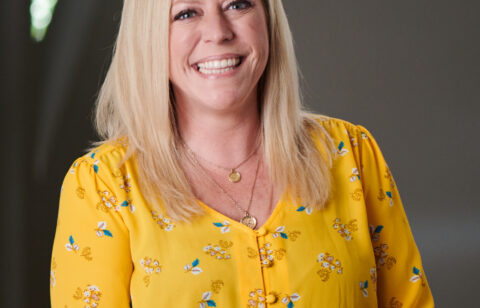Irregular paychecks can be a budgeting nightmare. Whether you are paid hourly, work on commission, or are self-employed, an erratic income can make it challenging to plan for expenses and save money.
Currently, gig workers make up about 36% of the workforce in the United States. This includes people who work as Uber or Lyft drivers, freelancers, contractors, and those in the on-demand economy. The rise of gig work has been attributed to the flexibility and freedom it offers workers. However, this work often comes with little to no job security and irregular pay.
Therefore, it is essential to understand your finances and how to budget when your income varies from month to month.
People Also Read
Determine average monthly income
The first step is to look at your past pay stubs or bank statements and determine how much money you typically bring in each month. This will give you a starting point to work with.
Be sure to include all sources of income, such as:
- Commissions;
- Wages and tips from a job;
- Any other forms of income you receive regularly.
When calculating your income, you should also verify whether you are factoring in your gross income or your net pay.
- Gross income refers to the total amount of money you earn before taxes and other deductions are taken out.
- Net pay, on the other hand, is your take-home pay after these deductions have been made.
For example, let’s say you make $2,000 in gross income each month. After taxes and other deductions, your net income may be closer to $1,500.
You can usually find your gross and net income on your pay stub. If not, you can calculate it by looking at your last few months of bank statements and seeing how much money was deposited into your account each month.
It is essential to use your net income when budgeting since this is the amount of money you have in hand to spend each month. Once you have determined your average monthly income, you can formulate a budget and learn how to manage your personal finances.
List and describe baseline monthly expenses
The next step is to track your monthly spending to get an idea of your baseline expenses. This includes both fixed and flexible expenses — otherwise known as needs versus wants. The main difference between the two is that fixed expenses are required to live, such as your rent or mortgage. Flexible expenses can fluctuate and are non-essentials, such as going out to eat.
Listing these items out gives you a better idea of where your money goes each month and what areas you can cut back on, if necessary. You can use a budgeting app, pen, and paper, or look at your bank statements from the past month to track your spending.
Fixed expenses
Fixed expenses are costs that remain the same each month, such as your:
- Utilities
- Groceries
- Car payments
- Rent or mortgage
- Student loan payments
- Health insurance premiums
- Minimum credit card payments
Fixed expenses can add up quickly. That is why it is essential to be mindful of these costs when budgeting and ensure you have enough money to cover them.
Flexible expenses
Flexible expenses can vary from month to month and are often classified as wants rather than needs. These include items such as:
- Travel
- Shopping
- Eating out
- Subscriptions
- Entertainment
- Gym membership
While these expenses are not required, they can still significantly impact your budget. If you are struggling financially, these are expenses you can typically cut out easier in comparison to your fixed expenses.
Reconfigure debts
If your monthly expenses exceed your income, it may be time to reconfigure your debts and bills. It is easy to fall into debt when you are not careful with your spending or if you have an irregular income.
Common debts that people have include:
- Credit card debt
- Student loan debt
- Medical debt
- Personal loans
- Car payments
If you are struggling to make ends meet, there are a few options available to help you get back on track:
- Debt consolidation — This involves taking out a new loan at a lower interest rate to pay off your existing debts. It can be a good option if you are struggling to make multiple monthly payments or have high-interest debt.
- Refinancing — This is similar to debt consolidation but can be done with specific types of debt, such as a mortgage or car loan. It involves taking out a new loan with better terms to pay off your debt.
Likewise, working towards credit card debt relief for bad credit can be a good way to reduce your monthly expenses and pay off your debt.
Reevaluate bank accounts
When you don’t have a steady income, choosing the right type of bank account is critical. For example, if you typically have a high balance in your account, you may want to open a high-yield savings account to earn interest. If you typically have a low balance, you may want to open a checking account with no minimum balance requirement.
Some things to look for in a bank account include:
- No minimum balance requirements
- Free or low-cost transactions
- High-interest rates
- Low fees
A checking account is beneficial because it allows you to monitor your spending all in one place and budget more efficiently. Plus, you can use it to set up a direct deposit for your income, which can be helpful if your income is erratic.
How and when to open a savings account
n addition, you should look into setting up a savings account, especially if you don’t have a steady income. These accounts come in handy for saving and setting money aside in case of an emergency or an unexpected expense. On the brighter side, a savings account can help you reach your financial goals. To open a savings account, you need to:
- Choose a bank or credit union
- Research account options
- Compare interest rates
- Consider fees and minimum balance requirements
Once you have chosen a bank or credit union, you can open an account online, in person, or by phone. You will need to provide some personal information and might also be required to make an initial deposit.
While a savings account is crucial, not everyone has one. According to The Federal Reserve, 36% of Americans do not have enough cash to cover a $400 emergency. If you find yourself in this situation, there are a few strategies to save money fast, such as t using a designated savings account you can only spend from a limited amount of times per month.
Add excess income to savings whenever you can
Savings contributions should ideally be automated, but if you don’t earn the same amount each month, that is not always possible. When you do have excess income, add it to your savings account. This will help in times when you encounter an unexpected expense or enable your savings account to grow. Every little bit counts.
A good rule of thumb to follow is the 50/30/20 rule, which designates 50% of your income for essentials, 30% for discretionary spending, and putting at least 20% of your income into savings.
However, if you have debt or you are living on a strict budget, this can be difficult to achieve. Instead, prioritize high-interest debt to pay off first, and build an emergency fund of 3-6 months of expenses to prepare you for anything. This way, you can protect your financial future and be prepared for anything that comes your way.
Additional tips for creating a budget on an unsteady income
In addition to the tips above, there are a few other things to keep in mind when planning a budget: :
- Savings first – Put your savings into a separate account, so that you are not tempted to spend it.
- Create a debt payment plan – If you have debt, create a strategy and a timeline for your payments. You may want to focus on the high-interest debt first or work on paying off small balances to stay motivated.
- Use a spreadsheet or budgeting software – Tracking your spending can be helpful when you don’t earn the same amount every month. This will help you see where your money is going and enable you to make adjustments.
Learning how to make a budget without a steady income can be tricky, but it is not impossible. With a little planning and effort, you can make headway on your financial goals and live the life you want.









